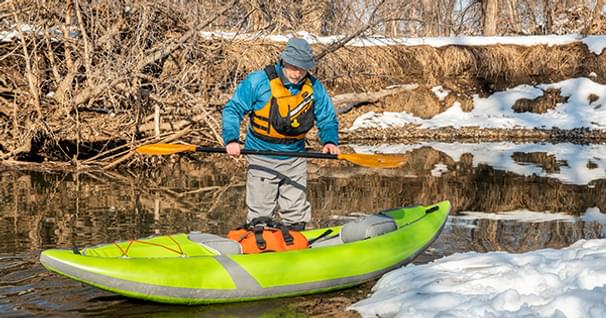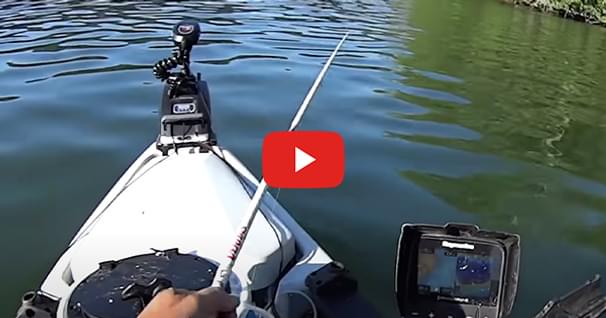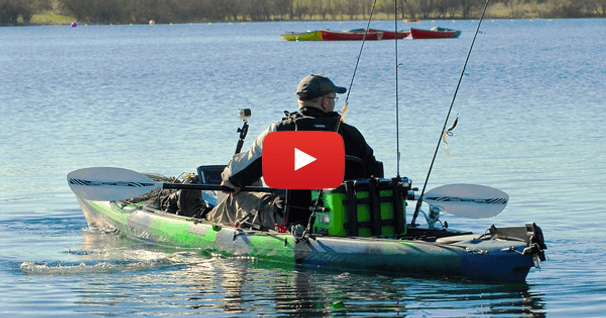Frigid Forays
By Tom Watson
Living within 600 miles of the Arctic Circle on an island in the North Pacific Ocean inspired me to challenge myself to try to kayak at least one day out of every month - all year long. Thankfully the warming influences of the Japanese Current maintains mostly moderate winter weather on Kodiak Island, and several years in a row I was able to keep my appointment even in the wintry waters off its shores.
Sometimes, while bobbing contently on a passing swell, I could still see myself paddling through the icy crusts of northern Minnesota lakes. I recall crisp autumn mornings when an early frost managed to flash freeze the stilled surfaces letting me play ice breaker with the bow of my scratched and dented Alumicraft canoe as I crush-cruised around a frozen-topped inlet.
My first stand-off with ice as a kayaker happened one Saturday, in Anchorage, in May! Having just formed my Wavetamer kayak business selling Feathercrafts, my partner and I eagerly hurried down to a lagoon on the southwestern edge of downtown. It was a balmy 50° morning as we entered the park only to see a solid, inch-thick sheet of ice covering all but a narrow ring of open water along the shoreline.
As a safety boat for the anticipated open-water demo session, we had hauled my canoe along. Fortunately the morning sun and a light breeze coming in over Cook Inlet jostled the ice enough that it started to break up in huge, running fractures. We climbed in the canoe and with me leaning out over the bow, whacking the ice with a double-bladed axe, we hacked out a narrow paddling route through the ice.
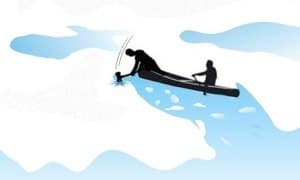
It wasn't too many years later that I found myself paddling out into the ice-choked waters of East Sound along the western reaches of Kenai Fjords National Park. Sheets of ice were being pushed around by winds coming up this narrow arm in Prince William Sound. Looming about fifty yards from shore was a massively array of crystalline ice - delicately structured like a frozen chandelier - glistening as sunlight bounced irratically throughout its maze of watery capillaries. In the otherwise stillness, I could hear a fluid tinkling, like water lacing through a wind chime -the gigantic, but delicate structure, seemed alive.
I slowly dipped my paddle and pulled gently, inching my kayak closer. It was as if I had sprung a trip wire. I heard a muffled, but distinct "crack" and watched drop-jawed as the entire structure started to collapse on itself - like an imploded high-rise apartment building being demolished. This looming structure of ice hissed as it pushed out it's last pockets of air, crumbling down onto the surface of the bay. Within seconds, this "breathing", pulsating, glittering jewel box of ice was a floating raft of lifeless slush.
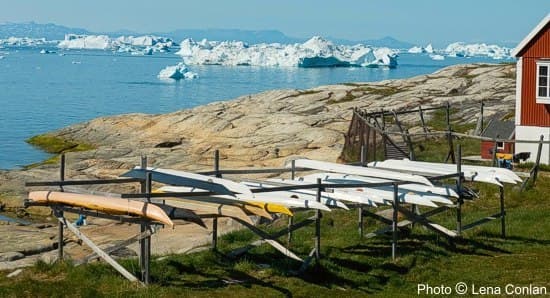
A serious challenge of winter ocean paddling is trying to second guess the tides - not so much their clockwork regularity, but what they move around as they ebb and flow. Sometimes larger bays give up their ice in expansive raft-like fragments formed in smaller coves. Freshwater streams start draining water from the spring thaw down into the bays, casting their lighter fresh water out over the top of languid and heavier salty sea water. Since the temperatures are already dancing plus and minus a few degrees of 32, it doesn't take much of a temperature drop, especially in late afternoon, for a glaze to form over otherwise "open" water.
Tides and winds can pull huge floating ice shelves out to the mouths of bays leaving the inner waters clear for paddling. The tides and winds reverse, pushing those thicker rafts of ice back up towards the head of the same bay, sometimes blocking the entrance or direct routes from one shore to the other.
Approaching one such sheet, I used a standard canoe ice breaking trick and bucked the kayak, yawing it forward, breaking away little bites as I went. As the ice got thicker I noticed tiny flecks of gleaming white ice in the bow wake as it bobbed past the cockpit. I quickly realized that it was not ice at all - but little chips of gelcoat being gnawed off my bow by icy teeth. It was a good omen. I turned to see the ice behind me closing like a zipper behind me. That in itself is yet another hazard of winter ice paddling. (Ice breaking is one of the reason so many kayakers in northern ice climates sometimes re-enforce their bow keels with a thin bumper/scratch strip of fiberglass matting).
Minnesota winters can be much harsher than Kodiak's so my canoe venturing has been limited to the backwaters of the Mississippi winter during the shoulder season before spring. Quite, slow-moving sections of rivers tend to freeze early, thaw late. Pushing that envelope a bit, paddling while ice still clings to the banks, means its almost certain that a canoer is likely to encounter a frozen slough at the end of an open side channel.

It's fairly easy to paddle through thin ice, it's usually the noise that you notice and not the reduction in glide. Thicker ice, however, tends to reveal itself by the resistance to the paddle tip poking through a harder crust and the now noticeable crunch sound coming from beneath the bow. Confidence seems to build with every forward stroke until that point where your kayak does, indeed, try to bite off more than it can chew.
Not wanting to see a repeat performance of the gelcoat flake flotilla, a prudent paddle has to know when ice "breaking" surrenders to ice "retreat". I learned how to back paddle from more than a few occasions where the only way back out through a freezing over watercourse was a deftly-placed reverse stroke as the surface solidified around me as I passed.
Proper dress, emergency supplies and a mental refresher course in techniques all play into winter paddling venturing with ice. And as always: Be safe and have fun out there!
Tom Watson is an avid sea kayaker and freelance writer. For more of Tom's paddling tips and gear reviews go to his website: www.wavetameradventures.comHe has written 2 books, "Kids Gone Paddlin" and "How to Think Like A Survivor"that are available on Amazon.com.
Related Articles
Flexibility is always a good topic of discussion when it comes to kayaking. Depending on our style of…
Kayak Catfish does some trolling with crappie magnets to catch some catfish bait.
How many of you have ever heard that paddle craft (vessels under oars according to the Navigation Rules)…
More times than not, the reason you aren't catching big fish is not because you aren't doing enough…

